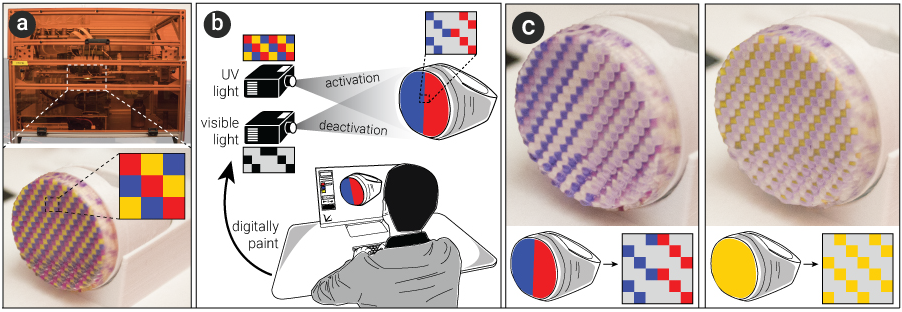ColorMod: A 3D Print of a Different Color

Latest News
March 9, 2018
Color 3D printing allows you to print an object in a wide array of different hues, but if you want something in a different color you have to print it again. For larger items, this could be a time-consuming task.
MIT researchers have come up with a technology – ColorMod – that would allow users to repeatedly change the color of a 3D-printed object after it is fabricated.
The team (working at MIT’s Computer Science and Artificial Intelligence Laboratory, CSAIL) are using a 3D printing ink that can change color when exposed to ultraviolet light. An object can be recolored in around 20 minutes.

“Largely speaking, people are consuming a lot more now than 20 years ago, and they’re creating a lot of waste,” says Stefanie Mueller, X-Consortium Career Development Assistant Professor in the departments of Electrical Engineering and Computer Science and Mechanical Engineering at MIT. “By changing an object’s color, you don’t have to create a whole new object every time.”
The ColorMod solution allows people to upload a 3D model and choose color patterns prior to printing. Using ultraviolet light, they can then activate different colors and visible light to deactivate other colors. Pixels are changed from transparent to colored and then back again, depending on the process.
The custom-developed ink includes a photoinitiator and light-adaptable dyes that can bring out the color of the base dye.
The recoloring time could be accelerated in the future using a more power light or a greater concentration of light-adaptable dyes.
Users could potentially change colors of their printed accessories to match clothing. Retailers could also use the process to customize items for sale.
“This is the first 3D-printable photochromic system that has a complete printing and recoloring process that’s relatively easy for users,” said Parinya Punpongsanon, co-author of the study. “It’s a big step for 3D printing to be able to dynamically update the printed object after fabrication in a cost-effective manner.”
Source: MIT
Subscribe to our FREE magazine, FREE email newsletters or both!
Latest News
About the Author
Brian Albright is the editorial director of Digital Engineering. Contact him at [email protected].
Follow DERelated Topics






